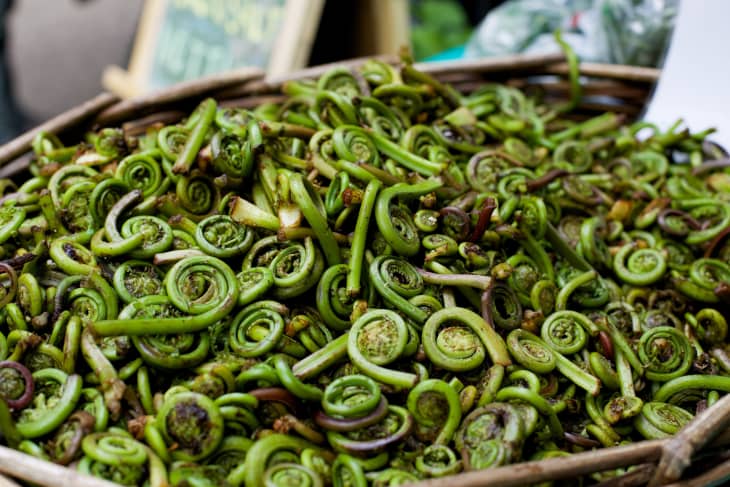Blink and You Might Miss Your Chance for Fiddlehead Ferns
I spotted fiddlehead ferns at the farmers market a handful of years ago. I was intrigued by their tightly wound, curly shape, although I made the mistake of not scooping some up since I had absolutely no idea how to use them. When I went back a week later, they were gone. Just as quickly as these spring vegetables make their entrance, they’re gone until next year.
What Are Fiddleheads Exactly?
Fiddlehead ferns are one of the delicious telltale signs of spring. While there are a few varieties, the most edible and the one most commonly found in markets and on restaurant menus are ostrich ferns. These tightly wound, disc-shaped vegetables are the curled fronds of a young fern, that are harvested during spring before the frond has a chance to mature and uncurl.
They have a bright green color, snappy texture — like green beans — and a grassy, woodsy taste, similar to asparagus.
Where to Find Fiddleheads?
Blink twice and you might miss them. Okay, I’m exaggerating, but only slightly. Fiddlehead ferns make their appearance around mid-spring, though unlike a spring favorite like asparagus, they don’t stick around very long.
Look for fiddleheads at the farmers market or specialty grocery stores. They can be pricey, but do make a fun dinner addition once or twice a season.
How to Buy and Store Fiddleheads
Fiddleheads pop up at farmers markets and stores around mid-spring. When buying them, look for tightly coiled discs that are firm, bright green in color, and have about one to two inches of stem. Avoid fiddleheads that have started to unravel or appear discolored.
It’s best to use fiddleheads as soon as possible after they’re harvested. Before too long the coils will turn from green to brown, the stems will begin to dry out, and the coils will soften. If you don’t plan to use them right away, keep the fiddleheads wrapped in plastic and store in the refrigerator.
The Best Way to Eat Fiddleheads
When it comes to preparing fiddleheads, there are two important things to know. First, steer clear of eating fiddleheads raw; they should always be cooked first. When eaten raw in large quantities, some varieties of fiddlehead ferns have been known to cause illness.
Second, preparing them is quite easy. Cook them any way you might cook asparagus — they can be boiled, steamed, and sautéed. To prepare, wash the curled-up tips carefully and remove any brown chaff. The chaff is either furry or paper-like. Trim off the browned ends, then cook as you wish. Fiddleheads are delicious on their own sautéed with butter and shallots, or tossed with pasta or risotto.
Try this recipe → Spring Lemon Risotto with Asparagus and Fiddlehead Ferns
Have you ever tried fiddleheads? How do you cook them?
Updated from a post originally published in April 2008.
